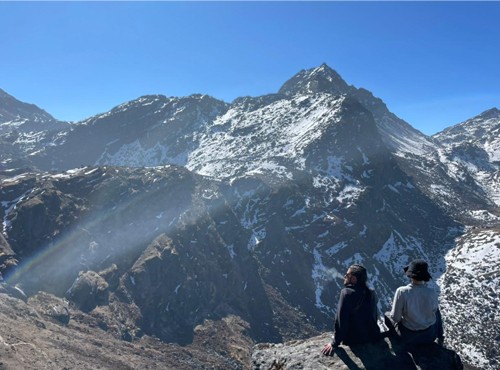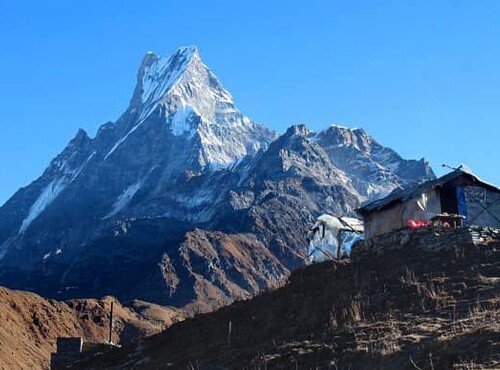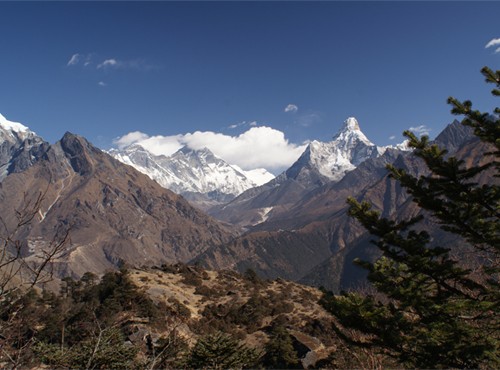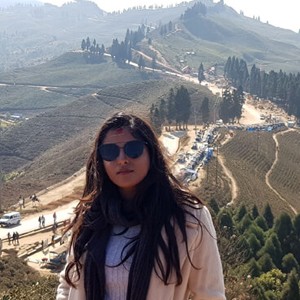Trekking in Nepal has always been a top activity among nature and adventure lovers. As individual adventures mostly take away the limelight, do you know Nepal has many trekking routes that are family-friendly? Even though numerous families visit Nepal every year to do trekking together, we do not hear much talk about family trekking in Nepal.
Family-Friendly Trekking in the Annapurna Region: Creating Lasting Memories with Loved Ones
Table of Contents
Every region in Nepal, like Everest, Langtang,Mustang, Annapurna, etc has specific trekking packages that well suit families. But our top favorite is the Annapurna region, given the variation, cultural immersion, breathtaking mountain views, and hospitality of the locals.
The Annapurna region is renowned for its unparalleled beauty and boasts a diverse range of trekking trails suitable for families of all ages. From picturesque villages and terraced fields to towering peaks and serene lakes, each step in this enchanting land will make you happy and leave you in awe.
Beyond the scenic allure, family trekking in Nepal offers something even more profound—the opportunity to bond with your loved ones. As you traverse the trails together, overcoming challenges, sharing laughter, and marveling at the wonders of nature, you'll create an indelible tapestry of unforgettable memories. Likewise, every moment spent together in the embrace of the Himalayas will strengthen your connections.
In this blog, we will share the top family-friendly trek in the Annapurna region. You will learn how to do family trek planning and pick the right trek. Trekking with kids in Nepal is a fantastic activity to get close to them and take them close to nature. We will also give you some family trek safety tips and share packing advice as well.
Family trek planning
Family trek planning in Nepal requires careful consideration and preparation to ensure a safe and enjoyable experience for all members. When planning a family trek in Nepal, it's crucial to consider the needs and abilities of all family members. Choose the trekking package that suits the fitness level of the youngest to oldest members of the group.
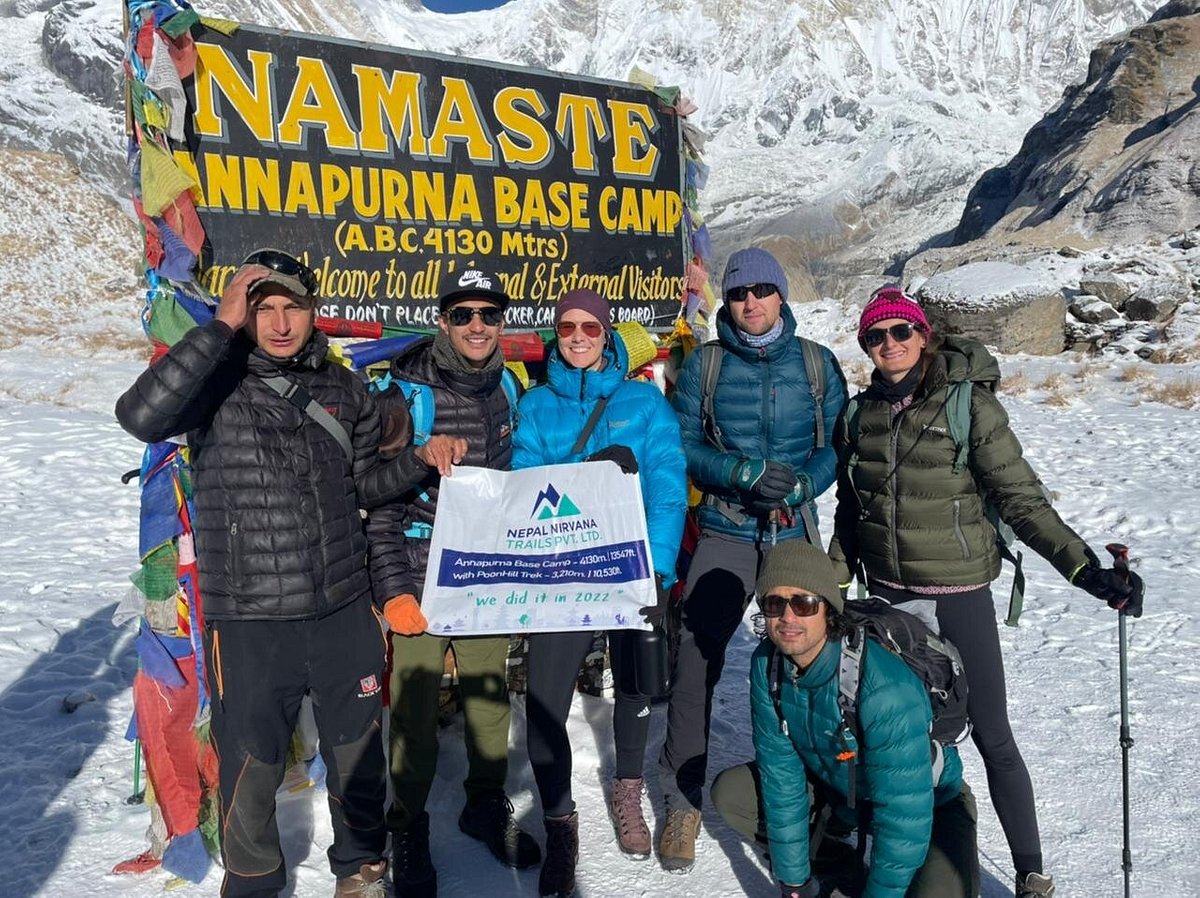
Below are essential steps to help you plan a successful family trek in Nepal:
Choose the right season
Choosing the right season for your family trek in Nepal allows you to enjoy the trip without any additional worries. The best time to visit the Annapurna Region is during the spring (March to May) and autumn (September to November) seasons. These months offer stable weather conditions, with clear skies and moderate temperatures.
During the spring, the region comes alive with colorful rhododendron blooms, while autumn lets you experience the festivity of Nepalese people. Both seasons offer excellent trekking opportunities and pleasant weather for family members of all ages.
While spring and autumn are generally favorable, you have to be prepared for occasional rain showers in the spring and cooler temperatures at higher altitudes during the autumn. Layered clothing is essential to adapt to changing weather, and packing rain gear is advised to stay dry during any unexpected rain.
Understanding the weather patterns and being equipped with the right clothing will ensure that your family stays comfortable and safe throughout the trek!
Selecting the appropriate route
You have to pick the best trekking route that fits all members of your family. As the Annapurna region offers a wide selection of trekking packages, from short treks to easy treks in Nepal, you will have many options. And there are a good number of family-friendly trekking routes too.
One of the most popular options is the Ghorepani Poon Hill trek, known for its breathtaking sunrise views over the Annapurna and Dhaulagiri ranges. The trail is relatively short and offers a mix of beautiful landscapes and cultural encounters with local communities.
For families seeking a slightly more extended adventure, the Annapurna Base Camp trek is a great choice. This moderate trek takes you through lush forests, terraced fields, and traditional villages to the base of the stunning Mount Annapurna.
Both of these routes are well-established, and teahouse accommodations are available throughout the trail, making them suitable and enjoyable for families with children and elderly members.
Mardi Himal trek, Mohare Danda trek, Khopra Dana trek, and Ghorepani Ghandruk trek are a few other lovely trekking packages in the Annapurna region for families.
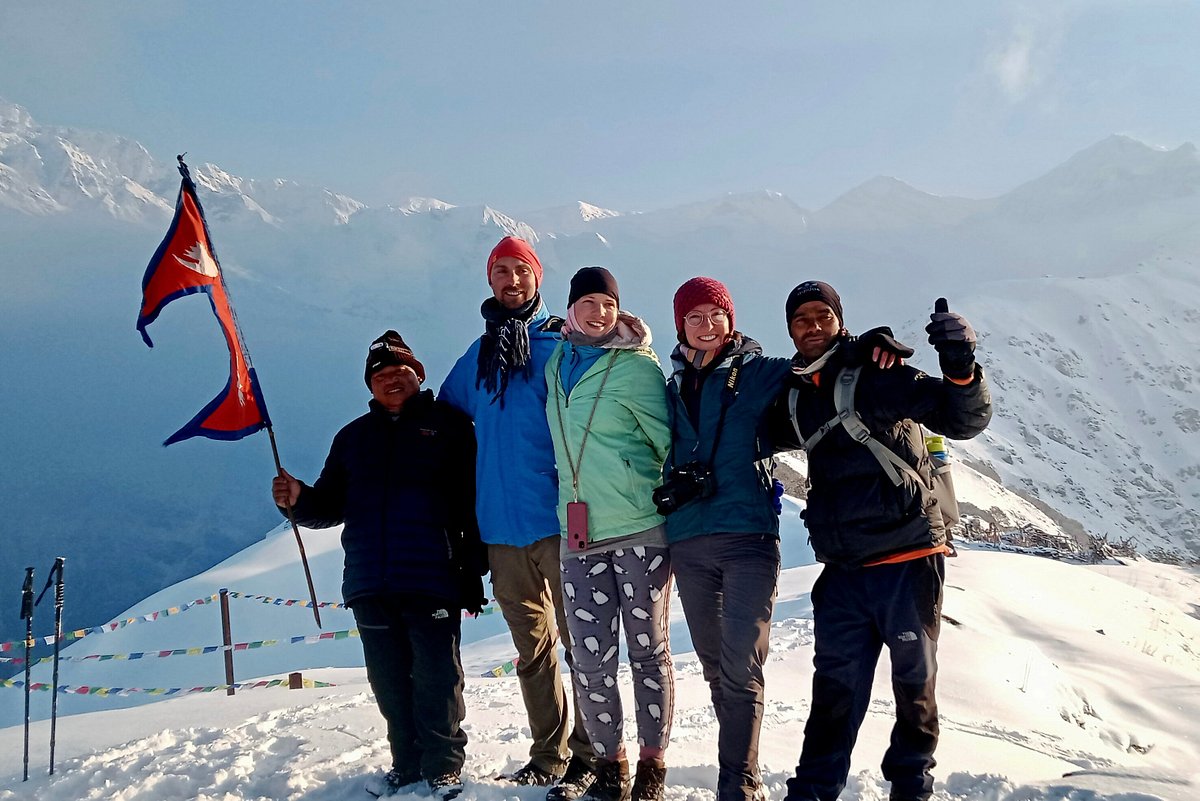
Obtaining permits and permissions
You have to make sure all the documents are ready on time for a smooth and hassle-free experience. That's where we, Nepal Nirvana Trails, come in very handy as our team obtains the required permits and makes all the necessary reservations.
Most trekking packages in the Annapurna region require two permits: the Annapurna Conservation Area Permit (ACAP) and the Trekkers' Information Management System (TIMS) card.
Preparing for the Annapurna trek
To ensure a safe and enjoyable experience for all age members, careful preparation is essential. From physical fitness and health considerations to packing essentials and hiring a local trekking company, each aspect plays a crucial role in making the journey an unforgettable one.
Physical fitness and health considerations
Assess the physical fitness of all members of the family, especially children and elderly participants, and pick a trekking package that suits everyone's fitness. Try to keep 4 to 6 weeks in your hands for preparation and do regular exercise and walking in that period. Likewise, consult with your doctor and obtain any necessary vaccination and medicine advice for general illnesses that occur during travel.
Packing essentials
For a comfortable trek, you have to pack all the essentials. Each family member should carry a day backpack with items, like spare money, lip balms, sunscreen, water bottle, basic first aid kit, snacks, etc. For children and elderly members, consider including light games, a journal, a torch, etc.
While trekking in the Himalayas, it is better to pack everything and not entirely rely on lodges. Trekking poles, sleeping bags, a small blanket or sleeping bag liner, insect repellant, a map, a compass, etc, all will come in handy. In Thamel, Kathmandu, there are many trekking shops where you can buy everything or rent if you are on a budget. Our team will provide you with a comprehensive family trek packing checklist once the booking confirmation is done with us.
Hire a local trekking company
A local trekking company can significantly enhance the family's trekking experience in Nepal. Local companies like us are well-versed in the region's terrain, culture, and weather patterns, making us invaluable guides throughout the journey. We can recommend family-friendly routes and adjust the itinerary based on the family's needs and interests.
We, Nepal Nirvana Trails, offer experienced and professional mountain guides who can provide valuable insights into the local culture, flora, and fauna, making the trek educational and enriching for children and adults. Furthermore, we also handle logistical arrangements, such as accommodation, permits, and transportation, ensuring a hassle-free experience for your family.
Make trekking with the kids and elderly safe and engaging
By implementing the following tips, you can ensure that trekking with kids and the elderly becomes a safe and engaging experience, fostering cherished memories and strengthening family bonds amidst the stunning beauty of the Himalayan mountains.
Managing altitude sickness
Altitude sickness occurs when the body sees a sudden drastic change in elevation or is exposed to reduced oxygen levels at higher altitudes. Common symptoms of AMS include headaches, dizziness, nausea, fatigue, loss of appetite, and difficulty sleeping. If you are trekking with your family in Nepal, then you have to be aware of these symptoms, as children and elderly members are more susceptible to altitude-related issues.
Strategies for acclimatization and prevention
Gradual ascent: One of the primary strategies for managing altitude sickness is a gradual ascent. Avoid gaining too much elevation in a single day, especially once you reach altitudes above 3,000 meters (10,000 feet).
Stay hydrated: Staying well-hydrated is critical at high altitudes. Encourage all family members to drink plenty of water throughout the trek to prevent dehydration.
Acclimatization days: Plan acclimatization days during your trek. These rest days provide an opportunity for everyone's bodies to adjust to the reduced oxygen levels.
Monitor symptoms: Keep a close eye on everyone's health and monitor any signs of altitude sickness. Encourage open communication within the family to ensure that anyone experiencing symptoms feels comfortable sharing their concerns.
Descend if necessary: If any family member experiences severe altitude sickness symptoms that do not improve with rest and hydration, descend to a lower elevation immediately.
The pace and rest days
Trekking in the Himalayas is not a race; it's a journey to be savored and enjoyed by the entire family. Setting a comfortable pace allows everyone to trek at a speed that matches their fitness levels. Children and elderly members may require a slower pace, and it's crucial to be patient and understanding throughout the trek.
To accommodate different abilities, consider shortening the trekking distance each day, especially during uphill sections or challenging terrains. Take breaks frequently to rest, hydrate, and capture the beauty of the surroundings. Emphasize the joy of being together and sharing the experience rather than focusing solely on reaching the destination.
Incorporating rest days to appreciate the surroundings and bond
Rest days (also known as acclimatization days) are not only essential for acclimatization but also offer an opportunity to explore and appreciate the natural and cultural beauty of the Himalayas. Designate specific rest days in your trek itinerary to allow family members to relax and immerse themselves in the breathtaking landscapes.
Use rest days to engage in various activities that cater to the interests of each family member. Explore nearby villages, interact with locals, visit monasteries, or enjoy short day hikes to viewpoints for panoramic views. Rest days also provide valuable time for bonding, playing games, sharing stories, or participating in cultural experiences together.
Engaging activities along the trek
Engaging activities along the trek can make the journey more enjoyable for all members, including kids and elderly travelers. For elderly travelers, exploring the local culture and traditions of the Himalayan region can be a captivating experience. Likewise, at higher altitudes in the Himalayas, the night skies are often clear and perfect for stargazing. After a day of trekking, gather as a family to marvel at the star.
Interactive games and activities for kids on the trail
Trekking with kids can be a delightful adventure with the right mix of interactive games and activities. Consider organizing fun games that incorporate the natural elements of the trek. For instance, you can play "I Spy" to spot unique flora and fauna along the trail or "Nature Scavenger Hunt" to find specific items like interesting rocks, leaves, or flowers.
Encourage storytelling sessions during rest breaks, where family members take turns sharing their favorite stories or creating imaginative tales inspired by the surroundings. Bring a sketchbook and colors for artistic expression or a journal to document the trekking journey, which can be both creative and educational for children.
Accommodations and dining
Annapurna region's trekking routes have lodges and tea houses for trekkers to spend the night. These accommodations also offer meals to travelers. These tea houses serve as a perfect base for families to rest, rejuvenate, and connect with the local culture.
Tea house accommodations
When embarking on a family trek in the Annapurna Region, we, Nepal Nirvana Trails, a reputable trekking company, will ensure that your family enjoys the best tea house accommodations. Tea houses and lodges are two basic types of accommodations. You will have decent space and clean blankets to spend the night in nature. The washrooms will be clean too, but you may have to share with other travelers as private washrooms are not available everywhere.
Our team has years of experience organizing family-friendly treks in the Annapurna region, so they understand the specific needs and preferences of families with children and elderly members. From ensuring comfortable bedding arrangements to offering hygienic facilities, they prioritize the well-being and comfort of your family throughout the journey.
Family-friendly food options
Tea houses and lodges in the Annapurna Region offer a diverse menu featuring both Nepali and Western dishes. For kids, options like fried rice, noodle soups, sandwiches, pasta, and momo (dumplings) are popular choices. These dishes are not only delicious but also provide the necessary energy for the trek.
For elderly members looking for familiar flavors, tea houses often serve dishes like porridge, pancakes, soups, mashed potatoes, and omelets that can be comforting and satisfying. Additionally, the local dal bhat, a traditional Nepali meal consisting of rice, lentil soup, vegetables, and achar (pickle), is a wholesome and nourishing option that appeals to all age groups.
Dietary considerations and maintaining hygiene during the trek
We take the dietary considerations of our guests seriously and ensure that their dietary requirements are communicated to the tea houses/lodges in advance. Whether it's vegetarian, vegan, gluten-free, or specific allergies, the team of Nepal Nirvana Trails will make sure that your family's dietary needs are accommodated.
Maintaining hygiene during the trek is important for the health and well-being of your family. Our team works closely with the tea houses and lodges to ensure that they maintain high standards of cleanliness and food preparation hygiene.
Family Trek safety tips
Safety should be your utmost priority while trekking with kids in Nepal or any other country. Partnering with a reputable local travel company like us ensures that your family's well-being is taken care of at every step of the journey. From comprehensive safety measures to emergency preparations, a local travel company offers peace of mind, allowing you to fully enjoy the beauty of the Himalayas with your loved ones.
- We provide trained guides and porters who will make the trek hassle-free for you
- Our team will make all the reservations in advance and obtain permits, saving lots of time to spend with your family
- We design the itinerary with ample rest days, so every member of your family can enjoy the trip at their own pace
- Our guide carries a satellite phone to stay connected with our city team in an area with a poor network
- We have well-established emergency evacuation plans in place that will come into action in case of any emergency
Communication and connectivity
While trekking in remote regions of Nepal, access to communication can be limited. However, you can get a tourist sim in Nepal to stay connected with your family. Likewise, you can buy walkie-talkies or other devices for you and your family. It will add more sense of adventure and wilderness.
First aid and medications
By carrying the necessary supplies and medications, your family can confidently navigate the trek, knowing that you are well-prepared for any minor health concerns that may arise. A well-stocked first aid kit is a must-have for any family trekking adventure. While local travel companies will provide a basic first aid kit, customizing it with items suited to your family's needs can be beneficial.
Capturing memories
Trekking with the family provides an abundance of chances to make lifelong memories, get close to each other, and understand each other. Capturing precious memories through photography and videography allows you to relive the adventure and share the experience with others. Whether it's the majestic Annapurna landscapes or candid family moments,
Preserving memories for a lifetime
Photographs are a tangible way to preserve memories and create a visual story of your family trek in Nepal. After the trek, take the time to organize and curate your photos, selecting the best shots that tell the narrative of your adventure.
Consider creating a photo album or a digital slideshow to share with family and friends. Reliving the journey through these images will keep the memories fresh and bring back the feelings of joy and wonder you experienced during the trek.
Furthermore, printing a few favorite photos and displaying them in your home serves as a daily reminder of the incredible moments you shared as a family amidst the Himalayan splendor.
Journaling and sketching
Nature sparks creativity and inspiration for all age groups. Encouraging especially children to maintain a trek journal and embrace creativity through sketching and writing allows them to capture their unique perspectives and memories of the trek.
Trek journals provide a safe space for kids to express themselves and reflect on their journey. You can offer creative prompts or questions for them to respond to in their journal. For example, "What was the most memorable moment today?" or "Draw a picture of your favorite Himalayan animal."
Likewise, you can bring sketchbooks, colored pencils, markers, or watercolors for kids to use during the trek. Having the right tools sparks creativity and encourages them to explore different artistic techniques. Ask them to sketch the mountain peaks, the vibrant prayer flags, or the unique plants they encounter.
Family trekking in the Annapurna Region of Nepal offers a magical journey. The shared laughter, the breathtaking views, and the moments of bonding will forever remain in your hearts. The trekking adventure in the Himalayas presents the essence of family togetherness as you tackle challenges, celebrate triumphs, and explore the wonders of nature hand in hand.
We encourage all families to embark on their adventure in the Himalayas, discover the magic of this mesmerizing land, and forge precious memories that will be cherished for generations to come. Trekking in Nepal not only offers an escape from the bustling world but also brings family close.
We, Nepal Nirvana Trails, have a wide selection of family-friendly trekking packages in Nepal. We are also flexible with our itineraries and always ready to organize different trips as per our guest's requirements. On top of that, our trip costs will let you travel with your family without making a hole in your pocket.
For more information, you can contact us at [email protected] or text/call us at +977 9841380469.

